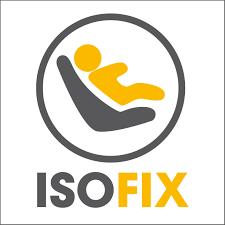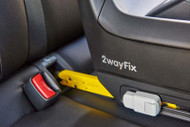What is ISOFIX and how can parents use it? | Babies Nz
Posted by Babies Nz on Oct 07, 2023
What is ISOFIX?
Car Seats are at the top of the baby shopping list and for a very good reason. They are an essential product for keeping your little one safe whilst you are on the go, in fact some hospitals won’t even let you leave if you are travelling by car without a car seat to drive home.
When buying a car seat for your child you’ll come across the term ISOFIX when you are doing your research. But what does it mean? We took a closer look at what this term means, how it works and why it is important.
| In a nutshell ISOFIX means “International Standards Organisation Fix”. ISOFIX is the top-class level of car seat safety on the market now to ensure your car seat is secured safely and properly. ISOFIX is a universal system designed in the 1990's for fitting car seats that uses attachment point built into the car rather than a seat belt which makes it easier to fit the car seat securely by reducing the risk of error. |  |
ISOFIX became mandatory in all vehicles manufactured after Nov 2014 which required all new cars to be manufactured with ISOFIX fittings.
It’s worth noting that the ISOFIX law covers Group 0+ and Group 1 car seats, which is from birth to 4 years. While Group 2/3 (4-12 years) car seats are governed by a system called ISOFIT.
ISOFIT is another piece of jargon that pops up from time to time. What is it? When your car seat has an integrated restraint (harness or shield) it falls into the ISOFIX category. When your child reaches 105cm approx. 4 years of age your car seat may still connect to the ISOFIX points, but the adult seat belt does all the work.
What approved forms of ISOFIX car seats are available:
Pros of ISOFIX.
ISOFIX minimizes the risk of incorrect installation. Child car seats fitted using seat belts are often installed and used incorrectly*. Isofix provides a solid, permanent connection between the car seat and the car body and it is proven to be outstandingly safe in tests.
Cons of ISOFIX
Not all ISOFIX car seats will fit in every car, so do your research before buying. This poses problems for two-car families who swap car seats between cars.
ISOFIX or Seat Belt - What's Safest?
The truth is that neither is more safe than the other when used properly. According to government testing standards, there aren't any safety-related advantages to using seat belts over ISOFIX / LATCH lower anchors, or LATCH lower anchors over seat belts, provided that the seats are installed correctly.
If we look at all data, crash test, real life usage, and habits, ISOFIX is far safer than installing a car seat with seat belt. With ISOFIX, virtually no mistakes are made, something which can not be said about seat belt installs.
*A study of Group 1 seats, conducted by the German Insurance Institute (GDV), found that 96% of seats fitted using ISOFIX were installed properly. In comparison, the same study found that only 30% of car seats were fitted correctly when the adult seat belt was used. This is because the seat belt anchor points vary in size, length and position from car to car, so creating a seat that fits perfectly in every car is virtually impossible.
